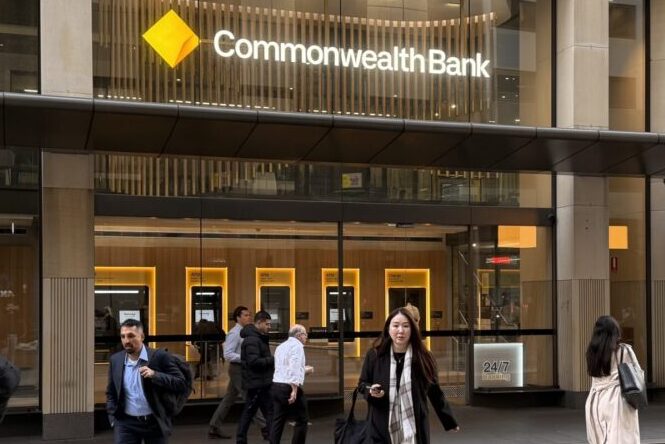

The shine is somewhat off the apple for ASX record-breaker, CBA. There's a tweet that caught my eye which illustrates the problem investors are facing, beyond the CBA share price.
CBA closed the session yesterday at a little over $178 per share. It's incredibly high, but it's a drop-off from the dizzying price it commanded late last month of $192 per share.
But that share price doesn't tell the whole story for CBA. Something on Twitter caught my eye yesterday (I'll never call it X, Elon). It was this tweet from over the weekend by financial author and podcaster Lloyd James Ross:
<blockquote class="twitter-tweet"><p lang="en" dir="ltr"><a href="https://twitter.com/search?q=%24CBA&src=ctag&ref_src=twsrc%5Etfw">$CBA</a> price to book value ratio is 4.0<br><br>Never in my investing life have I ever seen a retail bank sell for 4.0x book value. <br><br>To put that in perspective, a bank business is deemed to be expensive when selling for 2.0x book value.<br><br>CBA is twice that! <br><br>Compare it to larger, more…</p>— Lloyd James Ross (@lloydjamesross) <a href="https://twitter.com/lloydjamesross/status/1943919326479765555?ref_src=twsrc%5Etfw">July 12, 2025</a></blockquote> <script async src="https://platform.twitter.com/widgets.js" charset="utf-8"></script>
Australia has always had some of the most expensive bank shares in the world, but this is a wild stat that shows why more than a few investors are more than a little grumpy over CBA's current valuation.
CBA’s share price has long reflected investor confidence , but a price-to-book (P/B) ratio of 4.0 takes that to another level.
For context, the P/B ratio compares what a company is worth on the stock market to what it’s worth on paper — its “book value,” or total assets minus liabilities. In banking, that book value is especially meaningful.
Unlike tech firms that trade on ideas and brand power, banks deal in tangibles: loans, deposits, property, and investments.
For those playing at home, P/B differs from P/E.
While P/B gives you a sense of what a bank is worth, the price-to-earnings (P/E) ratio tells you how much you’re paying for what it earns.
Regardless of how you measure it, CBA isn’t cheap on either indicator: with a current P/E of 31.52, it’s trading well above the market average.
A bank trading at four times book value means investors are paying $4 for every $1 of net assets on its balance sheet.
And that kind of multiple doesn’t happen by accident. It suggests investors aren’t just buying the balance sheet: they’re backing the institution, its leadership, its lending margins, and its future profit potential. Most of all, institutional investors like super funds fleeing international markets (like the US) are paying for safety more than anything.
The wild rise of CBA on the ASX however has likely turned many retail shareholders off. And with the new surge in iron ore prices, resources stocks are now back in vogue. It's a simple calculus for investors: can CBA keep turning each dollar of capital into something more valuable than its peers can manage? Or is it merely just the price of "safety" for larger investors with more money to swing around?
Potentially, the only thing more surprising than CBA's current P/B is the fact that anyone still uses Twitter. Who knew?